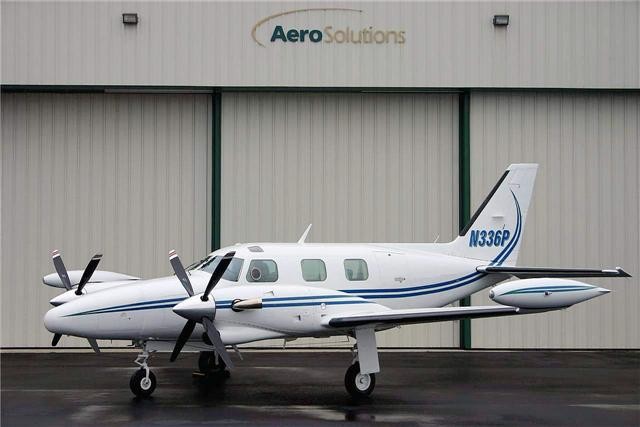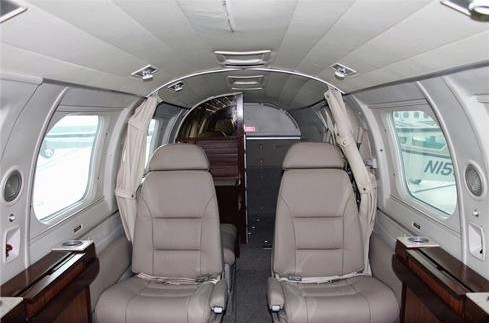


Aircraft Description
Background/History
In the late 1960’s, Piper Aircraft Corporation began development of a pressurized, twin-engine turboprop based on its successful PA-31 Navajo airframe. Redesign of the fuselage to accomodate pressurization was completed relatively quickly, and resulted initially in the deployment of a pressurized piston twin, the PA-31P Navajo P. Meanwhile, Piper engineers continued work on adapting the airframe to accept Pratt & Whitney PT6A-28 powerplants. The resulting PA-31T Cheyenne was introduced in 1974. The Cheyenne I was introduced in 1978 as a lower-cost, “entry-level” version of the Cheyenne, utilizing the less-powerful P&W PT6A-11’s (500 shp ea). The original Cheyenne, which retained the PT6A-28 powerplants, was then renamed the Cheyenne II. It came standard-equipped with tiptanks and an extra passenger seat, and, perhaps more significantly, with a stability augmentation system to tame a pitch idiosyncrasy associated with the greater thrust. The Cheyenne II XL, introduced in 1981, featured a fuselage stretch of 2 ft. The Cheyenne II was discontinued in 1983 after a production run of 527 aircraft, and deliveries of the II XL ceased the following year.
Power
The Cheyenne II is powered by a pair of Pratt & Whitney Canada PT6A-28 turboprop engines rated at 620 shp each, driving three-bladed, constant speed, full feathering Hartzell propellers. Engine inspection interval is 3,600 hours.
Avionics
The Cheyenne II’s tall panel accomodates a whole stack of King Silver Crown radios and equipment including the digital KNR 665A RNAV, the KFC 250 with flight director and KI 525A electric HSI, KI 229 RMI, and Bendix color weather radar.
Design Features
The Piper Cheyenne II is a light, cabin-class, twin engine turboprop business aircraft configured as a cantilever low-wing monoplane with conventional tail. The airframe is of aluminum monocoque construction. The retractable tricycle landing gear has one wheel on each unit. Entry to the cabin is provided by a single-piece airstair door on the port side, aft of the wing. Wingtip fuel tanks, accomodating 609 lbs. of fuel, are standard on the Cheyenne II, bringing the total fuel capacity to 2,559 lbs. The Cheyenne II is equipped with a stability augmentation system consisting of an elevator-downloading spring whose tension varies depending upon angle of attack. This SAS was incorporated to improve pitch handling in the high-power/low-airspeed regime associated with takeoff and initial climb.
Accomodations
The Cheyenne II is normally configured to seat seven in addition to the pilot, including one occupant in the right seat on the flight deck. Main cabin seating is commonly arranged in a four-seat club plus two individual seats. Cabin height is 4.3 ft., width is 4.2 ft., and cabin length is 8.4 ft.
| General | Cheyenne II, PA-31T-620 II | |||
|---|---|---|---|---|
| Category | Multiengine Turboprop < 12,500 lbs. | |||
| Years Aircraft Manufactured | 1974 – 1983 | |||
| Serial Number Range | 7400001 – 8120104 | |||
| Retail High Price | $1,350,000.00 / 1,059,345.00€ | |||
| Retail Low Price | $350,000.00 / 274,645.00€ | |||
| Characteristics | Cheyenne II, PA-31T-620 II | |||
| Seating | 1 + 6/7 | |||
| Wing Loading | 39.3 | |||
| Power Loading | 7.3 | |||
| Noise(EPNdB): Takeoff/Sideline/Approach | 73.2 | |||
| External Dimensions (ft) | Cheyenne II, PA-31T-620 II | |||
| External Length | 34.7 | |||
| External Height | 12.8 | |||
| External Span | 42.7 | |||
| Internal Dimensions (ft) | Cheyenne II, PA-31T-620 II | |||
| Internal Length (Overall/Net Height) | 8.4 | |||
| Internal Height | 4.3 | |||
| Internal Width (Max/Floor) | 4.2 | |||
| Baggage | Cheyenne II, PA-31T-620 II | |||
| External: Cu.Ft./Lb. | N/A | |||
| External: Cu.Ft./Lb. | N/A | |||
| Power | Cheyenne II, PA-31T-620 II | |||
| Engines | 2 P&WC PT6A-28 | |||
| Output (lbs ea.)/Flat Rating | 620shp | |||
| Inspection Interval | 3,600t | |||
| Data based on latest manufactured year | ||||



